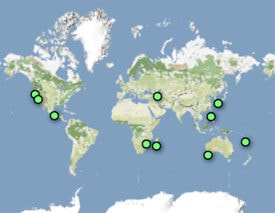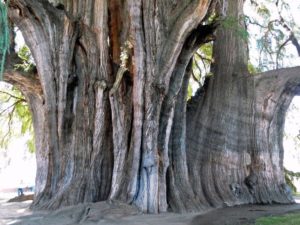World 🢖 North America 🢖 Mexico 🢖 Oaxaca
Wonder
Arbol del Tule (Árbol del Tule)
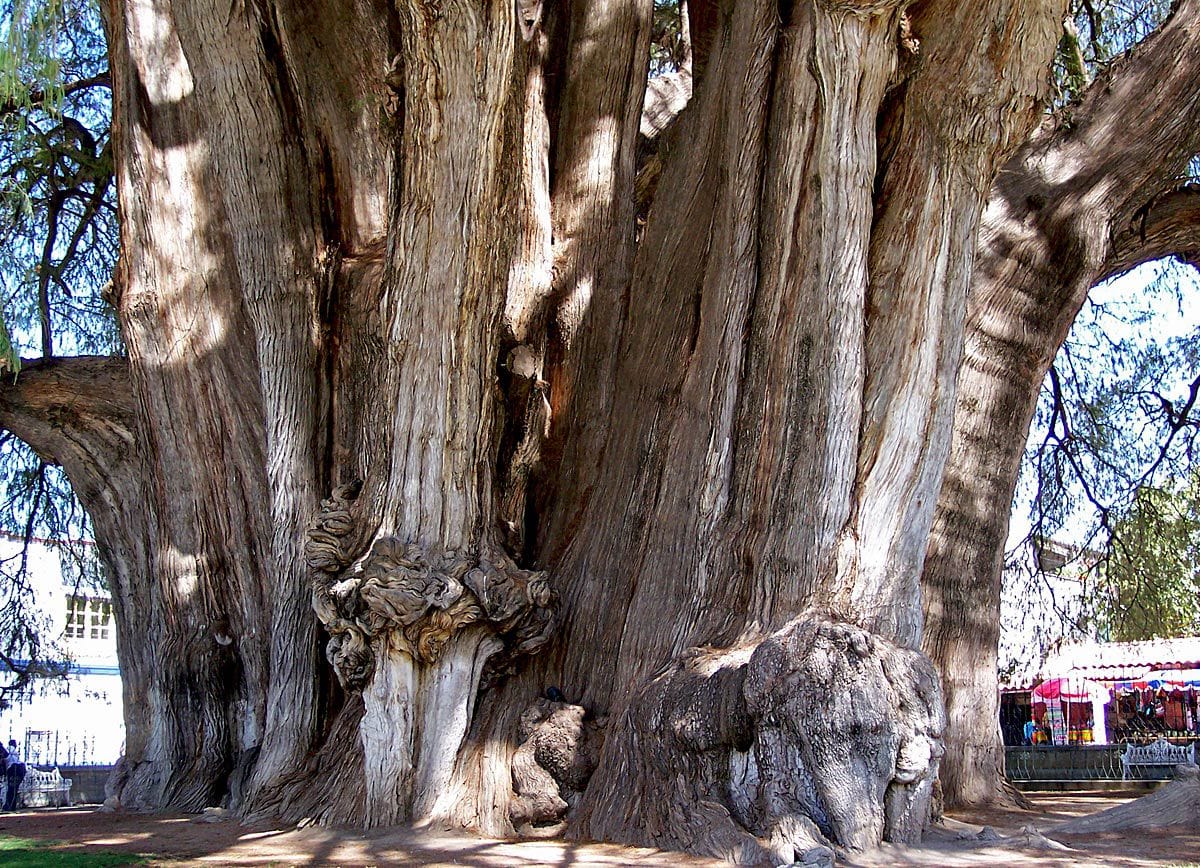
 In short
In short
One of main tourist attractions in the Mexican state of Oaxaca is an amazing tree – Arbol del Tule (Tule Tree). This Montezuma cypress at the breast height has a circumference of 36.2 m, thus making this species second stoutest in the world.
 48.4%
48.4%
GPS coordinates
Location, address
Alternate names
Species
Height
Circumference
Diameter
Width of crown
Volume
Map of the site
If you see this after your page is loaded completely, leafletJS files are missing.
 In detail
In detail
Montezuma cypress
Montezuma cypress (Taxodium mucronatum Ten., 1853) is a species of cypress which grows in Mexico, Guatemala, and the United States, in highlands, dry areas with deeper water levels, near rivers, and near wetlands.
This is a national tree of Mexico and has been a holy tree to local cultures, for example, Aztecs planted these majestic trees in gardens and along causeways and channels as a symbol of governance and power.
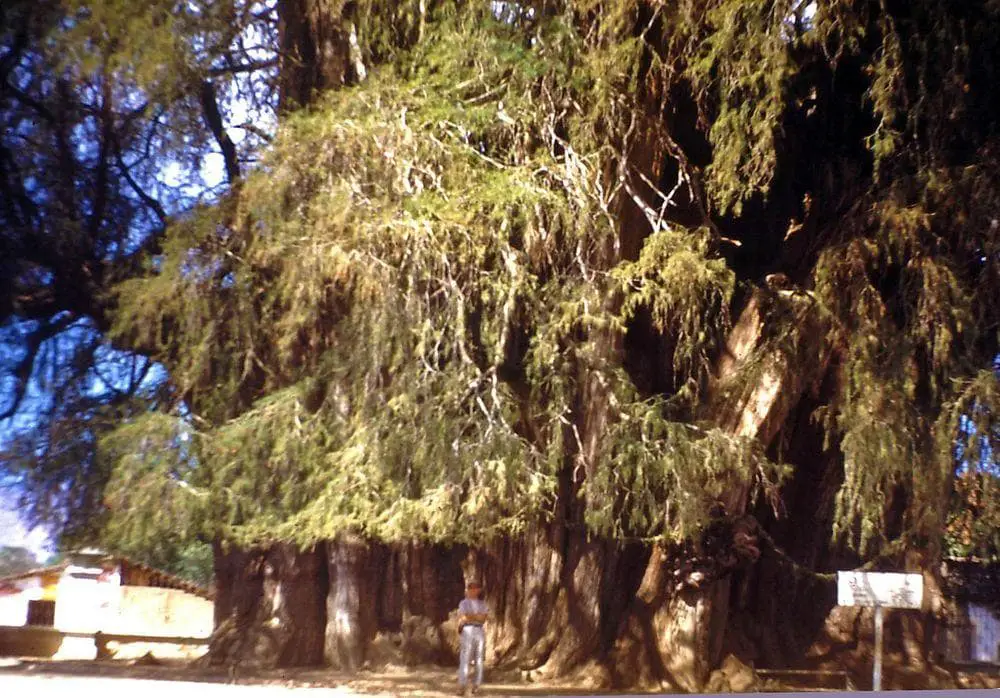
Cypress of Tule
Santa María del Tule is small town in Oaxaca. In the past here was located lake which turned into swampland and back in these times here started to grow Montezuma cypresses. Today in the town are found seven giant cypresses – besides the largest one others also are very large, with a circumference of some 10 m. Arbol del Tule most likely is the oldest one – its age is assessed to be 1,400 – 1,600 years.
Before the coming of Europeans Arbol del Tule was a sacred tree to local Zapotec culture. Now next to the tree in the 17th century was built a Christian church – it looks like a child toy next to the giant tree.
In the late 19th century tree suffered from a lack of water but since then local people have taken care of it.
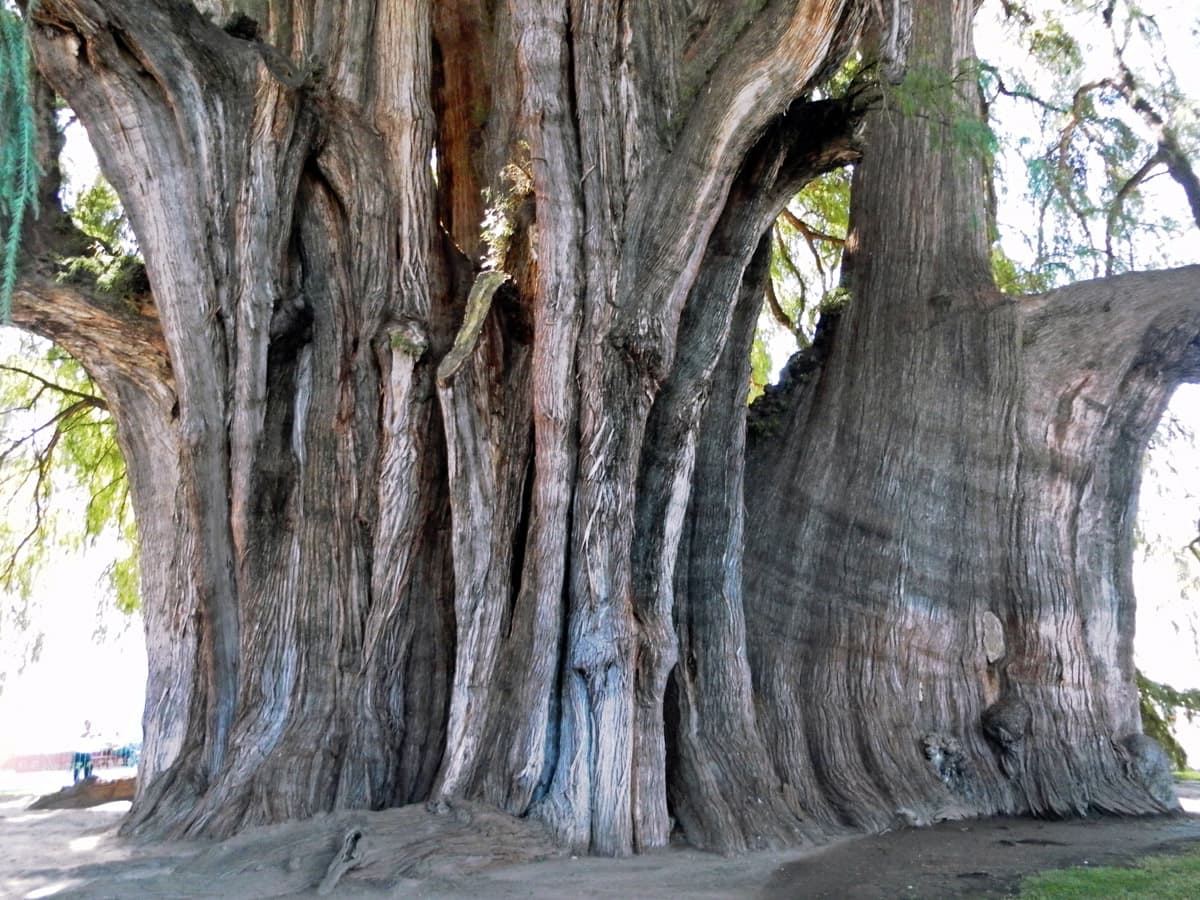
Now the tree is one of the most important tourist attractions in this area, with many small shops nearby selling souvenirs. Local people have much respect for the tree and there is a separate non-governmental organization that takes care of Árbol del Tule according to a dedicated plan for the conservation and maintenance of this tree (4).
On every second Monday of October here takes place the festivity of Arbol del Tule when people gather with candles and fire rockets.
The tree is important also for many other beings: for example, there are nesting six species of birds (3).
Cypress is in a good condition (1) and while part of the branches is slowly dying, others are still growing larger. Specialists consider that the trunk of the tree will become larger in the future (4). Earlier there were fears that the tree is dying due to traffic pollution but, happily, this is not true.
Size of the trunk
Circumference
Data about the circumference of the tree are contradicting. Most frequently is mentioned a circumference of 45.75 m or even larger – 54 or even 58 m. This is a measurement at the ground level and larger numbers most likely include measurement along the bays and promontories.
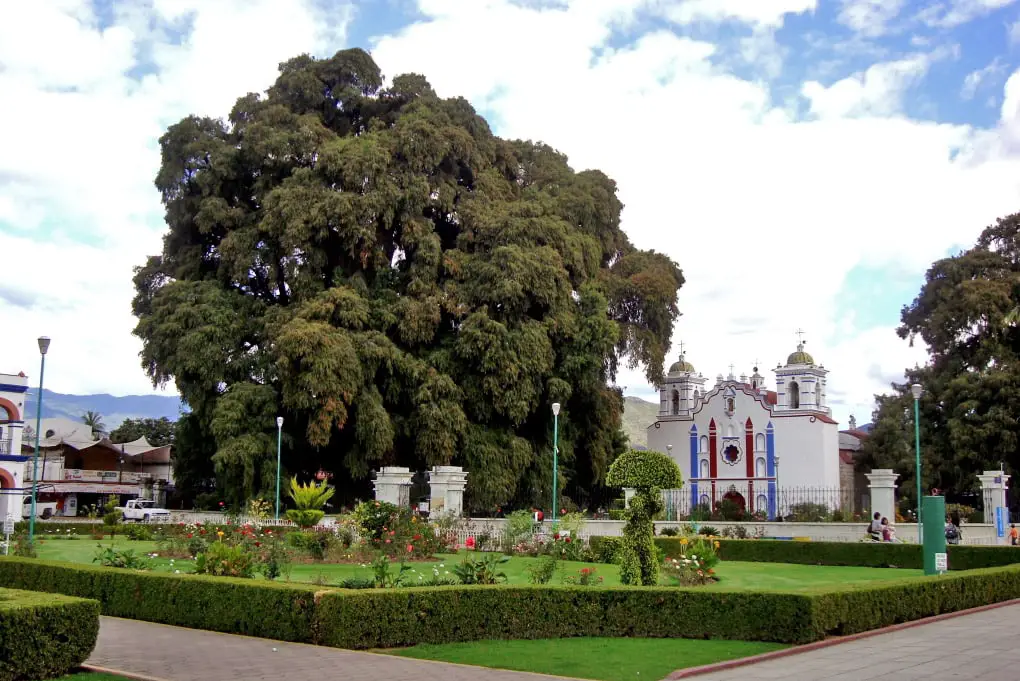
The correct way is to measure the circumference at the breast height (1.3 – 1.5 m) and the tape should not follow all the bumps and bays along the trunk.
Correct measurements by Dr. Robert Van Pelt in 2005 gave a more modest result – 36.2 m (3). The tree is growing – in 1987 the circumference was 35.84 m (also measured by Dr. Robert Van Pelt).
But also this measurement does not tell the full story. Configuration of the trunk of Árbol del Tule is unusual – the tree is buttressed, with an elongated form of the cross-section of trunk. This unusual form and unique size of it could be explained by the great age and existence of mighty branches which are “fortified” with fast growth under these branches in order to prevent them from splitting.
Diameter
The most likely more correct way to describe the size of this tree would be a calculation of the average diameter – it is assessed to be 11.62 m if the line of measurement tape is taken into account or 9.4 m if the mean width between buttresses and bays is calculated.
Third stoutest tree in the world
Whether the diameter of the tree is 11.62 or 9.4 m, Arbol del Tule makes Montezuma cypress the second stoutest tree in the world, after balete (Millenium Tree in the Philippines, diameter around 15 m). The inclusion of the balete tree could be discussed – this tree consists of numerous smaller trunks of a single organism that are joined together. After the split of once stoutest tree in the world – Glencoe Baobab in South Africa (diameter 15.9 m) next stoutest baobab (Sagole Tree) has a circumference of “only” 33.72 m. Fourth stoutest is the magnificent giant sequoia (General Grant Tree in United States, California, diameter – 8.8 m).
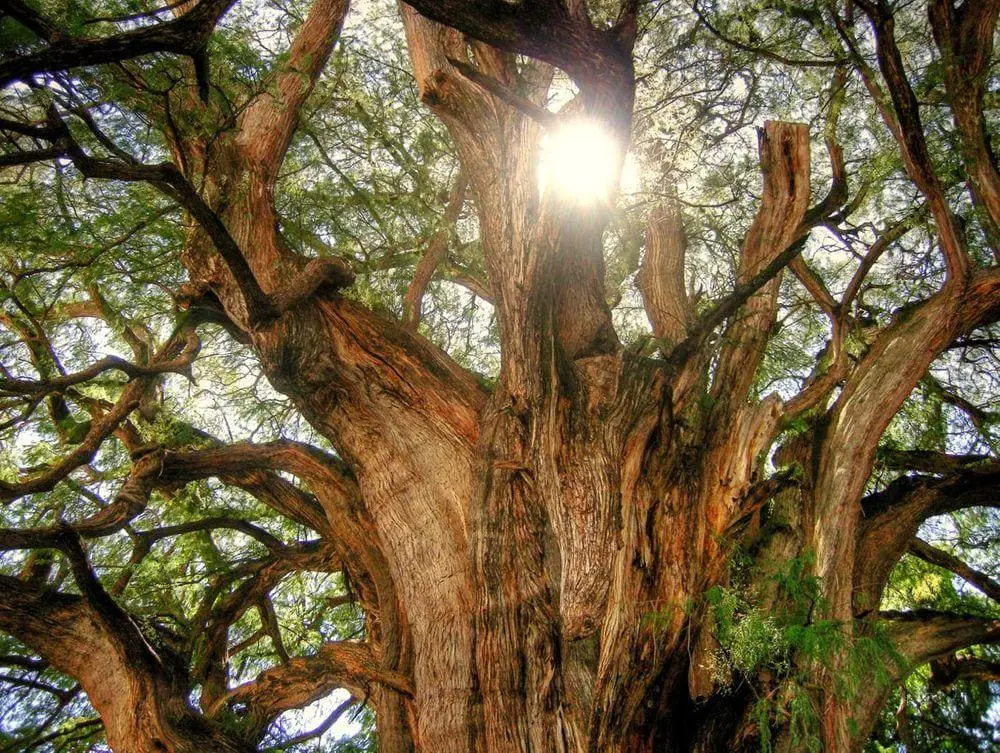
There have been discussions about whether Árbol del Tule is a single tree or several cypresses grown together. Electrophoretic analysis of the leaf material shows that this is a single tree (2).
Other dimensions
The height of Arbol del Tule reaches the impressive height of 35.4 m, measured by laser equipment. There are also larger numbers (41 – 43 m) given, but this most likely is a mistake caused by the wide crown of the tree.
Estimated volume of the tree is 750 m3.
References
- Gerard Passola i Parcerissa. Informe del estado general del Árbol de Santa María del Tule, 11.11.11. Asociación Mexicana de Arboricultura, 2012. Accessed in the 21st July 2014.
- Gustav W. Hall, George M. Diggs, Jr., Douglas E. Soltis, Pamela S. Soltis. Genetic Uniformity of El Arbol Del Tule (The Tule Tree). Madroño, 1990.
- Taxodium mucronatum. The Gymnosperm Database. Accessed in the 21st July 2014.
- Programa de Mejoramiento del Árbol del Tule. Comité “Mi Amigo el Árbol”
Arbol del Tule is included in the following lists:
 Linked articles
Linked articles
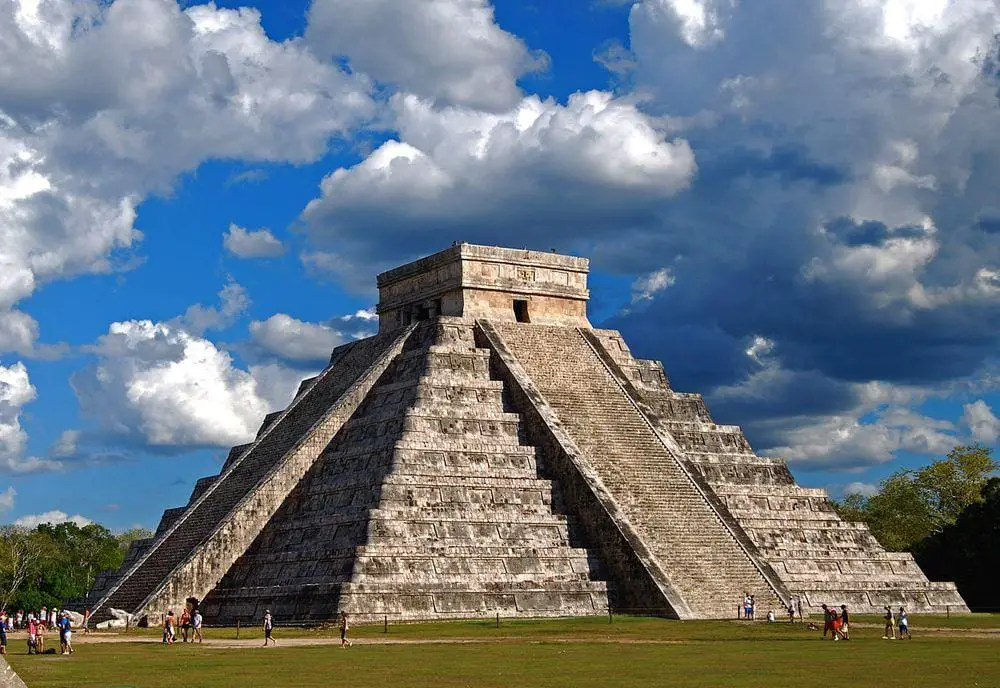
Wonders of Mexico
Few countries in the world can offer such an array of unique and astounding attractions as Mexico.
The area of this country was the cradle of several highly developed indigenous civilizations and some regions in the country are dotted with remnants of ancient cities with temples, palaces, and pyramids.
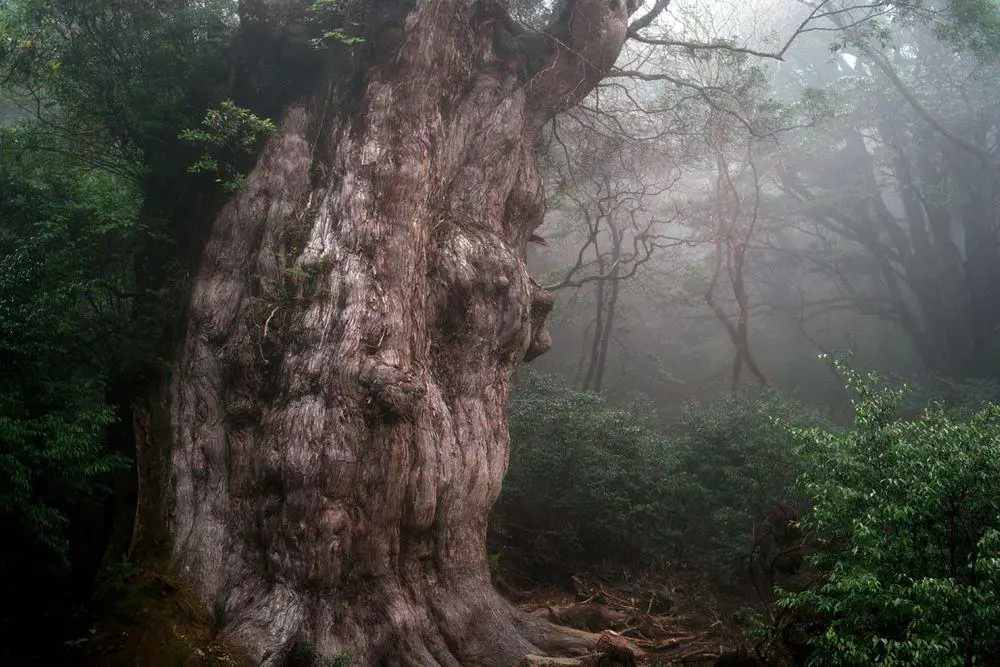
Trees
The category includes some of the most impressive and interesting separate trees in the world. The total number of tree species in the world still is a wild guess – maybe 10,000 and maybe 100,000 but most likely somewhere in between. Every month there are reported new tree species from the whole world, including Western Europe.

Wonders of North America
North America is a very diverse continent that extends from the northernmost land of the world to the moist tropical wilderness of Darien Gap. The most amazing wonders of North America are the prehistoric monuments of Mesoamerica, the geysers of Yellowstone, and colonial architecture.
 Recommended books
Recommended books
Giant Trees of Western America and the World
As a child growing up in the Fraser Valley, Al Carder was awed by the ancient Douglas fir forest and spent hours staring up at trees that commonly stood over 300 feet high. Sixty years later, after retiring from his career as a plant biologist, he set out to find the trees that had transfixed him in his youth. Discovering many of them felled by storms or loggers, he determined to document those that were left before they could vanish from our memories as well as from our landscapes.
Forest Giants of the World: Past and Present
Ever since the forest primeval, men and women have walked among the trees and admired their beauty, and wondered at their size. How big are these magnificent things, anyway? We moderns are wont to measure, categorize, and document, and so a book like this is born which is worldwide in scope and not only embraces space but also time. As the author, Al Carder shows us in his study of forest giants the past is as important as the present.

